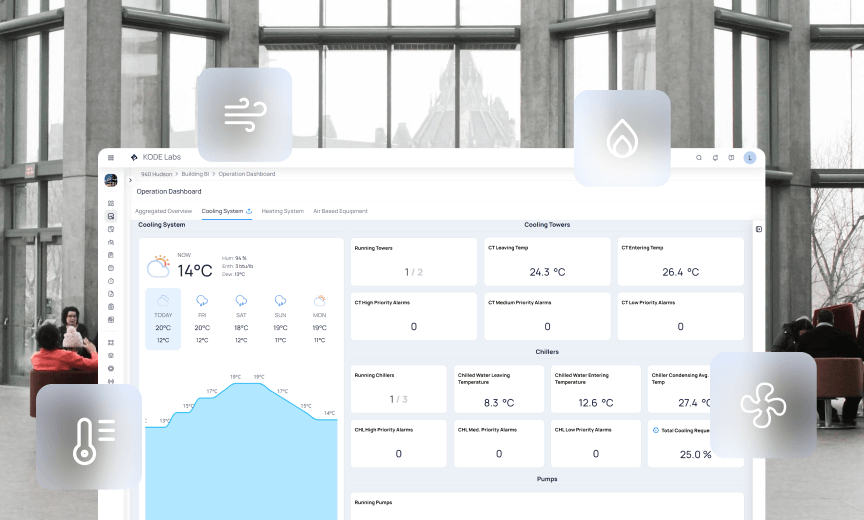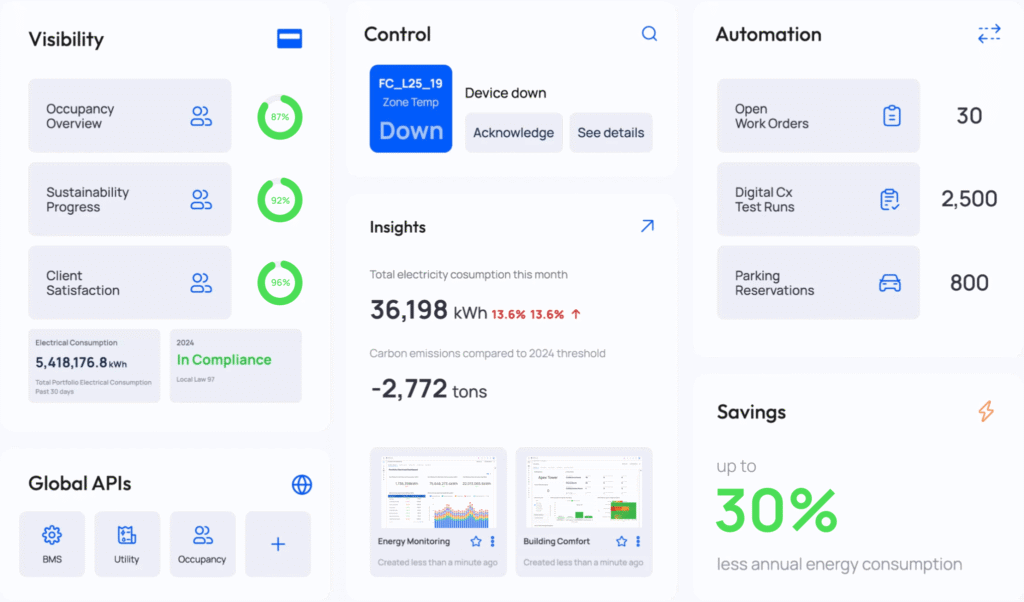On this page
Sign up to our newsletter
Subscribe to receive the latest blog posts to your inbox every week.
By subscribing you agree to with our Privacy Policy.

In the US alone, 19% of total energy consumption is attributable to buildings, of which 44% is used for HVAC related operation which includes space heating, cooling, and ventilation[1]. Technological advancements in HVAC system components, such as Variable Air Volume (VAV) units and Air Handling Units (AHU), have increasingly made these components more efficient. However, to maximize the energy efficiency of a building and to meet current ASHRAE and Title 24 standards, engineers must take a holistic approach to each building and its HVAC systems [2].
Typically, the HVAC system of a commercial building is designed to cool or heat a building under maximum load conditions, such as the hottest or coldest day of the year. Designing for these maximum load conditions is important, however it is also very inefficient because all buildings run below maximum load conditions over 99% of the time.
Duct Static Pressure Optimization
A strategy that can save additional energy in an HVAC system is the duct static pressure optimization (DSPO) strategy. A DSPO strategy reduces the duct static pressure setpoint until the average damper position of all VAV zones is between 50-75% [4] or 1 to 2 dampers are open 90% or more [2]. This strategy further reduces the fan speed necessary to maintain heating and cooling loads throughout the air delivery system. Studies have found that a DSPO strategy can save an additional 19 to 42% on HVAC energy consumption [5].
DSPO can be implemented through different strategies one of which is called Trim and Respond. Trim and Respond slowly trims the static pressure setpoint regularly until a zone indicates that more static pressure is required; in which case the controller responds by further trimming the setpoint up or down by a small increment. This method has been proven to be the most effective method of implementation since it is easier to tune, does not necessarily require knowledge of VAV damper positions, and makes it easier to ignore rogue zones.
DSPO in your building
Common Signs a Facility could benefit from DSPO:
- More than 25% of dampers are nearly closed during cooling or heating cycles – static pressure is too high.
- More than 25% of dampers are fully open during cooling or heating – static pressure is too low (starved VAVs).
- Requests for more or less ventilation are coming from a single zone and impacting the demand to the rest of the zones – this is also known as a rogue zone.
Sensing and Control Points
A solid DSPO strategy revolves around having the right data available for the system to make the appropriate adjustments over time. At a minimum, the HVAC system should have the following points available in the BMS:
- Duct Static Pressure Setpoint
- Duct Static Pressure
- AHU Fan Variable Frequency Drive Control
- VAV Damper Position Control
- VAV Airflow
- VAV Airflow Setpoint
Additional data points that can further assist in the optimization of your HVAC system are as follows:
- Zone Temperature
- Zone Temperature Setpoint
- AHU Discharge Air Temperature
- AHU Discharge Air Temperature Setpoint
- Occupancy Sensors
Successful DSPO strategy deployment is reliant on consistent and frequent data from the data points listed above. It is recommended that the frequency of data collection is every 5 to 30 minutes at a minimum. This ensures the strategy can be implemented with accuracy and avoids uncomfortable situations for the building’s occupants.
An open enterprise Building Operating System
The amount of effort that will be required by your building engineering team will be entirely dependent on the type of BMS system you use.
Having the right building management platform is key to implementing DSPO successfully. The type of platform used will also determine the amount of effort that will be required by your building engineering team. Almost all BMS software have the capacity to integrate DSPO strategies for a building, the question is how much engineering work will be needed to establish DSPO and monitor the success of the strategy. In the case of most BMS systems the implementation of these strategies is entirely manual, requiring your engineering team to spend hours analyzing the data, programming control strategies, and monitoring the system over time to ensure that it is operating correctly.
Thankfully, advanced intelligent building platforms, such as the KODE OS, have automated this process down to the click of a button, saving engineering teams the tedious task of implementing complex strategies manually. Once integrated with the BMS, the KODE OS will monitor, control, and store unlimited historical data for all points. It leverages machine learning and artificial intelligence to easily implement complex strategies like Duct Static Pressure Optimization, Discharge Air Temperature Optimization, and Optimized Start-Stop, to name a few.



